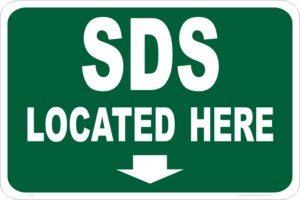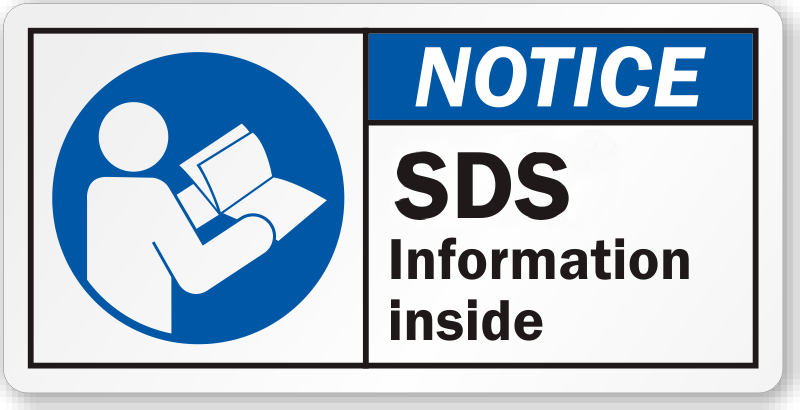I am going to skip some details here, but this is a very good (but brief) overview of the major steps needed to create a Safety Data Sheet (SDS).
OSHA now refers to these documents as SDSs, rather than Material Safety Data Sheets (MSDSs), like they used to. In addition, now the United Nations (UN) has a role in this game, as they created a system called the UN Globally Harmonized System of Classification and Labeling of Chemicals (GHS). (You sick of acronyms yet?? :^)
Ok, so here are 5 of the major steps (there are more steps!) that you need to create a safety data sheet (SDS) for your project:

- Analyze the components of your product
This step means that you need to do some analysis of WHAT is in your product. This might mean just a basic chemical analysis, such as if you have a sand like product, doing XRF testing to figure out what major oxides are in it, as well as any major important metals (like mercury, lead, etc.)
The analysis step might mean that you have to do more in depth organic analysis by hiring an analyst with specialized equipment.
Big picture, you need to know generally WHAT is in your product, and then use a laboratory (or maybe even more than laboratory) to perform the analysis. You may give them a general list of ingredients, so they can help you figure out how to do the testing.
There is a big fat list of physical and chemical properties that you must determine, at the OSHA site. Just for starters, these physical and chemical properties include: Appearance (physical state, color, etc.); Upper/lower flammability or explosive limits; Odor; Vapor pressure; pH; Relative density; melting point/freezing point; Flash point; Flammability; auto-ignition temperature; and viscosity.
- Look through the guidance and templates for SDSs
You can look at the US OSHA website to see their guide, and then that will lead you to the UN site, so you can meet their criteria as well.
OSHA actually has some solid guidance on how to structure the SDS to meet their requirements and to be a useful document for whoever it is that will use your product.
- Cross check your ingredients for health hazards
Once you have the analyses in hand, you must go through and determine which ones are health hazards and require precautions for personnel that come into contact or use your product. Very important!
- Check your ingredients for additional safety requirements
On the SDS is information for every aspect of your product. Yes, the health hazard information is essential, but the SDS should also contain information such as (but not limited to): fire response information, transportation requirements, physical and chemical properties, stability and reactivity, disposal considerations, and regulatory information.
- Create the safety data sheet (SDS)
Now that you have all the necessary information compiled, you can put it together into an actual safety data sheet (SDS).
You might want to leverage the expertise of an occupational safety and health (OSH) professional to at least review your SDS for completeness.
– –
So, as you see, creating a safety data sheet can be a daunting task! If you need help with it, you need to find someone that has not only the ability to get the laboratory testing done, but also has the expertise of occupational safety and health standards that can do the research and data compilation, and put it into a CORRECT safety data sheet, that is useful and helpful to those that use it.
In short, we can help with ALL the tasks above, and if we accept to create a safety data sheet for your product, you send us the product, as well as any information that you have for it, and we can take it from there, and deliver both Word and PDF versions of your own safety data sheets (SDSs)!
If you need help creating your safety data sheet, contact us here!
Check out our other social media pages!
